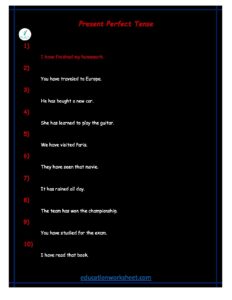how to converting Present Continuous Tense interrogative sentences to negative form
how to converting Present Continuous Tense interrogative sentences to negative form
The English language is rich in its variety of tenses and sentence structures. One of the fundamental tenses is the Present Continuous Tense, which is often used to describe actions or events happening right now or in the near future. Understanding how to convert Present Continuous Tense interrogative sentences into the negative form is crucial for effective communication in English. In this comprehensive guide, we will delve into the details of this conversion, step by step, to help you master the skill.
Present Continuous Tense Overview

Before we dive into converting interrogative sentences into the negative form, let’s briefly review the Present Continuous Tense itself. This tense is formed using the present tense of the verb “to be” (am, is, are) plus the base form of the main verb with the -ing suffix. It is commonly used to describe actions or events that are happening at the time of speaking or events occurring in the near future.
For example:
- Affirmative: She is reading a book.
- Interrogative: Is she reading a book?
- Negative: She is not reading a book.
Step 1: Identify the Interrogative Sentence
The first step in converting a Present Continuous Tense interrogative sentence to the negative form is to identify the interrogative sentence you want to transform. Interrogative sentences typically begin with an auxiliary verb (am, is, are) followed by the subject and the base form of the main verb with -ing.
For example:
- Interrogative: Are you eating lunch?
Step 2: Locate the Auxiliary Verb
In our example sentence, the auxiliary verb is “are.” This verb is crucial in forming both interrogative and negative sentences in the Present Continuous Tense.
Step 3: Add “Not” After the Auxiliary Verb
To convert an interrogative sentence into a negative one, we need to insert the word “not” immediately after the auxiliary verb. So, our example sentence would become:
- Negative: You are not eating lunch.
Step 4: Reorder the Sentence
In English, the negative form of the Present Continuous Tense usually has the following structure: subject + auxiliary verb (am, is, are) + not + base form of the main verb with -ing.
In our example, we reorder the sentence as follows:
- Negative: You are not eating lunch.
Step 5: Optional: Contracting “Not”
In everyday spoken English, it’s common to contract “not” with the auxiliary verb to form contractions like “aren’t,” “isn’t,” or “isn’t.” This can make your sentences sound more natural and less formal. For our example sentence, you can contract “are not” to “aren’t”:
- Negative (contracted): You aren’t eating lunch.
Step 6: Punctuation
In both the full and contracted forms, it’s important to use appropriate punctuation to indicate that the sentence is negative. Use a period (.) at the end of the sentence for a statement, and if the sentence was originally an interrogative one, you can use a question mark (?) at the end if the sentence still carries a questioning tone.
In our example:
- Negative (contracted): You aren’t eating lunch.
- Negative (with a questioning tone): Aren’t you eating lunch?
how to converting Present Continuous Tense interrogative sentences to negative form

Practice Makes Perfect
Converting Present Continuous Tense interrogative sentences to the negative form is a valuable skill that enhances your ability to communicate effectively in English. To master this skill, practice is key. Try converting different interrogative sentences to their negative counterparts, and pay attention to the position of “not” and any contractions. Over time, this process will become more intuitive, and you’ll be able to use the Present Continuous Tense with confidence in both its negative and interrogative forms.
how to converting Present Continuous Tense interrogative sentences to negative form Learn the art of transforming Present Continuous Tense interrogative sentences into the negative form with ease, thanks to our detailed and user-friendly tutorial. Elevate your English language skills as you grasp the intricacies of crafting negative statements in the Present Continuous Tense, empowering you to express yourself fluently and accurately

